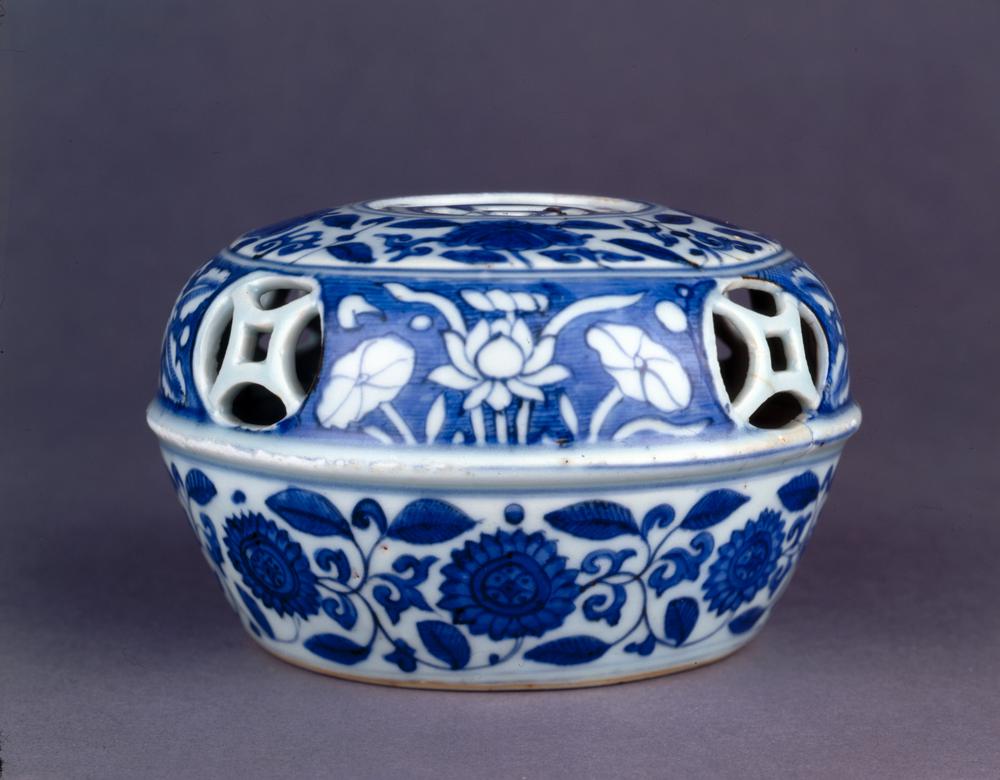Period:Northern Song dynasty Production date:972
Materials:silk, 絲綢 (Chinese),
Technique:painted
Subjects:bodhisattva religious object lotus 菩薩 (Chinese) 法器 (Chinese) 蓮花 (Chinese) 供養人 (Chinese)
Dimensions:Height: 91.50 centimetres Width: 59.10 centimetres
Description:
Painting of Avalokiteśvara seated on a lotus, behind an altar and surrounded by other bodhisattvas. Three male and three female donors. Central male donor is Zhang Geqiao, whose parents are right and left of the central inscription.
IMG
![图片[1]-painting; 繪畫(Chinese) BM-1919-0101-0.52-China Archive](https://chinaarchive.net/Northern Song dynasty/Paintings/00154150_001.jpg)
![图片[2]-painting; 繪畫(Chinese) BM-1919-0101-0.52-China Archive](https://chinaarchive.net/Northern Song dynasty/Paintings/mid_RFC660_top.jpg)
![图片[3]-painting; 繪畫(Chinese) BM-1919-0101-0.52-China Archive](https://chinaarchive.net/Northern Song dynasty/Paintings/mid_RFC660_bot.jpg)
![图片[4]-painting; 繪畫(Chinese) BM-1919-0101-0.52-China Archive](https://chinaarchive.net/Northern Song dynasty/Paintings/mid_RFC660_whole.jpg)
Comments:EnglishFrom Whitfield 1983:Many features typify this small votive painting as characteristic of late tenth century Buddhist art at Dunhuang. The viewer is at once aware of the bright colouring, in which green and orange tones predominate, and of the prominence of the donors below, all identically apparelled. Both features immediately recall the wall paintings of many of the tenth century caves at Dunhuang, where pale green is often the prevailing tone, and rows of donors, almost life-sized, parade around the walls (e.g., Cave 61; Dunhuang bihua, Pl. 204). In this painting, the men stand on a fringed carpet; the ladies opposite wear elaborate headdresses with hairpins and bright yellow ornaments (intended to be golden). The edges of their sleeves reveal embroidered floral patterns.Despite the lavish ornamentation, however, the actual execution of the painting reveals the simplified approach due to the comparative isolation of Dunhuang at this time. Little room is left for the eight Bodhisattvas surrounding Avalokitesvara; even the altar cloth, with “Praise to the Bodhisattva Guanyin” written on it, has no lower border, and the last two characters have had to be fitted in as best they may since the writer failed to judge the space correctly.The dated inscription (Fig. 35), which is presented as though written on a stone tablet, appears to reflect the predominant importance of the donors. Its wishes refer only to the family of the chief donor, Zhang Keqiao, captain of infantry troops. The cyclical year renshen in actual fact corresponds to the fifth year of the Kaibao reign, rather than the fourth as written here: as Waley pointed out, the cyclical date (A. D.972) is likely to be the correct one. ChineseFrom Whitfield 1983:此小型供養畫,多方面體現了敦煌10世紀後期佛教美術的特點。看到此繪畫時,首先引起注意的是綠和橙色爲主調的明亮的配色,以及下欄出現的同一姿態的男女供養人像。這些特色直接讓人想起敦煌石窟10世紀的大多數壁畫。可是壁畫中淡綠色爲主調的場景比較多,供養人像幾乎是等身大,排列在牆壁的周圍(如參照第61窟:《敦煌壁畫》圖版204)。此絹畫中,男人像並排站在有裝飾邊的墊上,對面的女人像可見帶著鮮黃色(用以代表金飾)的頭飾和簪子的豪華髮型。兩者的衣物袖口都有刺繡的花紋。儘管用奢侈的裝飾物來表現,但此畫的描繪能反映當時敦煌陷入相當孤立狀態的背景,其表現有傾向簡單化的感覺。只留給簇擁觀音的八菩薩一小部分空間,寫有“南無觀音菩薩”的祭壇挂布下端也被省略。而且在挂布上記錄文字時,沒有充分考慮文字的分配,最後兩個字,即“菩”和“薩”未能很好的納入裏邊。含有紀年的題記(參照Fig.35),收納在石碑形框中,大概是尊重供養人的意向,採取的特殊處理。那裏記錄的祈願文是專對供養人所代表的步兵隊長張擖橋家族的。干支壬申,事實上不是這裏所寫的開寶四年,而是指同年號的五年。正如Waley指出,取干支“壬申”(972年)比年號更準確。
Materials:silk, 絲綢 (Chinese),
Technique:painted
Subjects:bodhisattva religious object lotus 菩薩 (Chinese) 法器 (Chinese) 蓮花 (Chinese) 供養人 (Chinese)
Dimensions:Height: 91.50 centimetres Width: 59.10 centimetres
Description:
Painting of Avalokiteśvara seated on a lotus, behind an altar and surrounded by other bodhisattvas. Three male and three female donors. Central male donor is Zhang Geqiao, whose parents are right and left of the central inscription.
IMG
![图片[1]-painting; 繪畫(Chinese) BM-1919-0101-0.52-China Archive](https://chinaarchive.net/Northern Song dynasty/Paintings/00154150_001.jpg)
![图片[2]-painting; 繪畫(Chinese) BM-1919-0101-0.52-China Archive](https://chinaarchive.net/Northern Song dynasty/Paintings/mid_RFC660_top.jpg)
![图片[3]-painting; 繪畫(Chinese) BM-1919-0101-0.52-China Archive](https://chinaarchive.net/Northern Song dynasty/Paintings/mid_RFC660_bot.jpg)
![图片[4]-painting; 繪畫(Chinese) BM-1919-0101-0.52-China Archive](https://chinaarchive.net/Northern Song dynasty/Paintings/mid_RFC660_whole.jpg)
Comments:EnglishFrom Whitfield 1983:Many features typify this small votive painting as characteristic of late tenth century Buddhist art at Dunhuang. The viewer is at once aware of the bright colouring, in which green and orange tones predominate, and of the prominence of the donors below, all identically apparelled. Both features immediately recall the wall paintings of many of the tenth century caves at Dunhuang, where pale green is often the prevailing tone, and rows of donors, almost life-sized, parade around the walls (e.g., Cave 61; Dunhuang bihua, Pl. 204). In this painting, the men stand on a fringed carpet; the ladies opposite wear elaborate headdresses with hairpins and bright yellow ornaments (intended to be golden). The edges of their sleeves reveal embroidered floral patterns.Despite the lavish ornamentation, however, the actual execution of the painting reveals the simplified approach due to the comparative isolation of Dunhuang at this time. Little room is left for the eight Bodhisattvas surrounding Avalokitesvara; even the altar cloth, with “Praise to the Bodhisattva Guanyin” written on it, has no lower border, and the last two characters have had to be fitted in as best they may since the writer failed to judge the space correctly.The dated inscription (Fig. 35), which is presented as though written on a stone tablet, appears to reflect the predominant importance of the donors. Its wishes refer only to the family of the chief donor, Zhang Keqiao, captain of infantry troops. The cyclical year renshen in actual fact corresponds to the fifth year of the Kaibao reign, rather than the fourth as written here: as Waley pointed out, the cyclical date (A. D.972) is likely to be the correct one. ChineseFrom Whitfield 1983:此小型供養畫,多方面體現了敦煌10世紀後期佛教美術的特點。看到此繪畫時,首先引起注意的是綠和橙色爲主調的明亮的配色,以及下欄出現的同一姿態的男女供養人像。這些特色直接讓人想起敦煌石窟10世紀的大多數壁畫。可是壁畫中淡綠色爲主調的場景比較多,供養人像幾乎是等身大,排列在牆壁的周圍(如參照第61窟:《敦煌壁畫》圖版204)。此絹畫中,男人像並排站在有裝飾邊的墊上,對面的女人像可見帶著鮮黃色(用以代表金飾)的頭飾和簪子的豪華髮型。兩者的衣物袖口都有刺繡的花紋。儘管用奢侈的裝飾物來表現,但此畫的描繪能反映當時敦煌陷入相當孤立狀態的背景,其表現有傾向簡單化的感覺。只留給簇擁觀音的八菩薩一小部分空間,寫有“南無觀音菩薩”的祭壇挂布下端也被省略。而且在挂布上記錄文字時,沒有充分考慮文字的分配,最後兩個字,即“菩”和“薩”未能很好的納入裏邊。含有紀年的題記(參照Fig.35),收納在石碑形框中,大概是尊重供養人的意向,採取的特殊處理。那裏記錄的祈願文是專對供養人所代表的步兵隊長張擖橋家族的。干支壬申,事實上不是這裏所寫的開寶四年,而是指同年號的五年。正如Waley指出,取干支“壬申”(972年)比年號更準確。
© Copyright
The copyright of the article belongs to the author, please keep the original link for reprinting.
THE END
![[Qing Dynasty] British female painter—Elizabeth Keith, using woodblock prints to record China from the late Qing Dynasty to the early Republic of China—1915-China Archive](https://chinaarchive.net/wp-content/uploads/2022/11/image-191x300.png)




